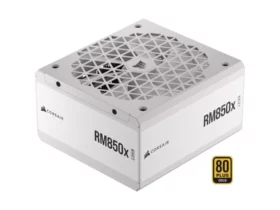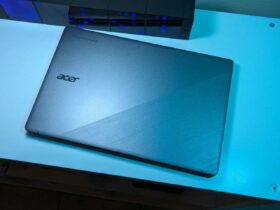The printed circuit board that houses switches and other components is the keyboard PCB. Let’s find out all about design and necessary factors
You can also keep track of the key pressed on your computer using the keyboard PCB. Using the keyboard, you can also enter data into the computer.
In addition, there are two essential components on the keyboard PCB:
- the microprocessor, which acts as a keyboard controller
- the real keyboard keys that can be seen with the naked eye.
Two types of switches mounted
Plate Mounted and PCB Mounted Switches are the two mounting styles available for mechanical keyboards.
The contact pins of each type of switch are what differentiate plate-mounted from PCB-mounted switches.
A plate mounted switch has 3 pins, while a PCB mounted switch has 5.
Difference between keyboards
Membrane keyboards are used more frequently. Membrane keyboards use a thin membrane that presses on a circuit layer to register which button is pressed.
These keyboards are less expensive, practical, quiet and lightweight. While mechanical keyboards include spring-loaded switches. You can check out the various keyboards on keyboardtester.io.
These respond to key presses by registering them with a unique mechanical snap of the keyboard.
The ability to customize a mechanical keyboard that allows you to change keycaps is another important difference between mechanical keyboards and membrane keyboards.
When choosing the keyboard PCB, keep the following points in mind
1. Suitability for mechanical switches:
Mechanical switches are available in two different leg configurations: three and five legs. It is best to build or choose a keyboard PCB that can accommodate both of these types.
2. Keyboard layout and size
There are different sizes of keyboard PCBs.
Some of them have 84 keys and are small. Some even have full keyboard layouts. Decide which one is best for you based on your needs.
3. Software Compatibility
Most keyboard PCBs include RGB lighting which can be controlled. Make sure they have reliable software support so they can access these features.
4. Hot-swappable PCB and standard PCB
Hot-swappable keyboard PCB and regular keyboard PCB are the two main varieties. Therefore, we recommend that you use the hot swappable PCB.
How come? because the switch is easy to replace and the PCB is more versatile than a normal keyboard.
5. PCB quality
Depending on the manufacturer of the product, the keyboard PCB or electronic circuit may be of variable quality. Choose items from PCB, a renowned PCB manufacturer, whenever possible.
6. Prezzo
When evaluating a keyboard PCB and other associated items, pay attention to cost. You must have it. In light of this, we recommend that you prioritize quality over cost.
PCB design guide
1. Recognition of electrical characteristics
- maximum values established
- Tensions
- types of signals
- capacity restrictions
- impedance characteristics
- security issues
- Type and location of connectors and circuit components
- Schematic and list of network wires in detail
2. Definition of the scheme
Making a schematic, which describes the electrical design of the board’s purpose and function, is always one of the initial stages. However, it is not yet a mechanical representation.
3. Use a schematic capture program to create the PCB layout
With the help of software platforms such as Mentor PADS®, Allegro or Altium, the ideal PCB supplier will work with leading engineers to create a schematic outlining the exact feature board and component placement.
The mechanical engineer will upload your schematic after creating it and decide how it will fit into the target gadget.
4. Create the stackup for your PCB
Resistance, which describes the amount and speed of electrical transmission along a track, makes it critical to take this into account early in the PCB design phase.
To design and mount the PCB in the device, the mechanical engineer must take stackup into account.
5. Establish specifications and design guidelines
IPC, the industry association for PCB and electronics manufacturing, establishes widely used standards and acceptability requirements for this stage.
Find a PCB layout supplier who is very familiar with IPC standards; this will help you prevent significant changes and delays in the project.
6. Put your parts in place
The arrangement of components on a PCB is often decided through discussion between the customer and the PCB supplier.
Each component (most often connections) has a datasheet, which the PCB supplier will use to create the mechanical layout and provide it to the customer for approval.
7. Drill holes with a drill:
Components and a connection guide this process.
Double-sided flex circuits, which connect to the hole on the bottom layer, make up about half of all available products.
8. Route the tracks
After placing the components and drilling the holes, the track path is made, which involves joining sections of the path.
9. Incorporate labels and identifiers
This is the time to mark the layout with any reference labels, identifiers, labels or designators.
The positioning of particular components on the board is usefully indicated by reference designators.
10. Produce layout and design files
The layout process ends with this phase.
Your PCB is now ready for fabrication, production and assembly once these files, which contain all relevant information, have been generated.
Frequently Asked Questions (FAQ)
Q1. What components do you need to build a keyboard?
Res: A printed circuit board (also called a PCB), keyboard switches, keycaps, stabilizers, case and back plate, and USB cable.
Q2. What is a PCB keyboard?
Res: The printed circuit board that houses switches and other components is the keyboard PCB. Any switch can be replaced or modified without having to solder it to the mechanical keyboard PCB.
Q3. Do you need a PCB plate?
Ris: You may want to add a platter to your build if you type fast or prefer the feel of a really solid keyboard.
Q4. Which keyboard plate is the best?
Res: Polycarbonate plates lack the strength and stiffness of aluminum back plates.
Q5. What is the best material for keyboards?
Ris: Due to their ease of mass production, aluminum and plastic are the two materials used in most keyboards. Acrylic and wood keyboard cases are less popular choices.
Conclusion
Above mentioned are the guidelines you can follow before configuring the mechanical keyboard PCB.
Anyone with a working knowledge of electronic engineering can build their own PCBs quite easily.
But it is vital to keep in mind that if you don’t have relevant knowledge, it would probably be advisable to enlist the help of an experienced PCB manufacturer.
















Leave a Reply
View Comments